By David Jordan Jr
(Played in cadence by the Georgetown University Band) Bom.Bom.Bom…BOM BOM BOM BOM.BOM.Bom.BOM BOM BOM BOM, Tip off. This was ritual in 1996. The Capital Centre. Landover, Maryland. Georgetown Hoyas home basketball games. The 1995-1996 Georgetown Hoyas basketball team was one of the greatest, most talented teams to have ever have been coached by Coach John Thompson, Jr.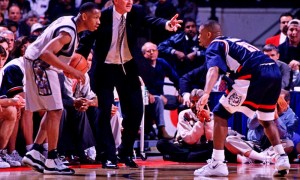 The greatness of this team is not marked by their mere accomplishments alone; this team was great due to not only how they played, but also in the ways this team won games and the teams this Hoyas team dismantled throughout that memorable season. Starting the 1995-96 season out ranked #5 in the country in the Pre-Season AP Poll, the Hoyas would remain in the top 10 through the first 3 months of the season and drop no lower than 14th in the AP Poll, finishing the season ranked #4 in the country in the final AP Poll.
The greatness of this team is not marked by their mere accomplishments alone; this team was great due to not only how they played, but also in the ways this team won games and the teams this Hoyas team dismantled throughout that memorable season. Starting the 1995-96 season out ranked #5 in the country in the Pre-Season AP Poll, the Hoyas would remain in the top 10 through the first 3 months of the season and drop no lower than 14th in the AP Poll, finishing the season ranked #4 in the country in the final AP Poll. 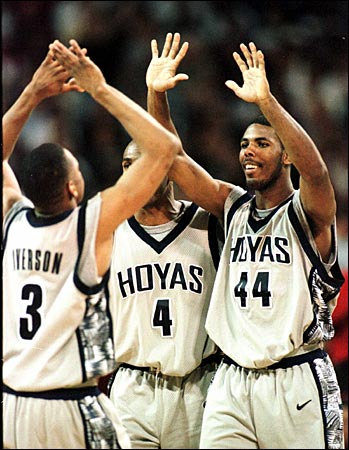 A team fueled by an imposing defensive presence, the intensity and heart with which this team played with was always present to any viewer that watched them play; whether it was a non conference December ( during Christmas Break) game against Morgan State or a pivotal Big East game against nationally ranked UCONN, these Hoyas brought the same effort and focus nightly, from the starting team captain all the way down to the non scholar shipped walk on. Seeing these games was something to marvel at but each impacting player had the own unique contribution to this team. The wisdom of human interaction and basketball wisdom from not only Coach Thompson but his entire coaching staff enabled this team to come together to pursue the ultimate prize; the NCAA Division I Men’s Basketball championship.
A team fueled by an imposing defensive presence, the intensity and heart with which this team played with was always present to any viewer that watched them play; whether it was a non conference December ( during Christmas Break) game against Morgan State or a pivotal Big East game against nationally ranked UCONN, these Hoyas brought the same effort and focus nightly, from the starting team captain all the way down to the non scholar shipped walk on. Seeing these games was something to marvel at but each impacting player had the own unique contribution to this team. The wisdom of human interaction and basketball wisdom from not only Coach Thompson but his entire coaching staff enabled this team to come together to pursue the ultimate prize; the NCAA Division I Men’s Basketball championship.
To fully understand the dynamics which created the run for that season, one has to have a complete understanding of how Georgetown University basketball came to be Georgetown basketball. 12 years prior to 1996 the Hoyas had won the 1984 NCAA Championship with legendary big man Patrick Ewing manning the post and leading the Hoyas to a victory over the University of Houston and their star center Akeem (later Hakeem) Olajuwon. This victory not only gave Georgetown University it’s first NCAA Championship (and to date its only NCAA Championship) but this victory also made Coach John Thompson Jr the first black coach to win a NCAA Championship. The time period which this happened was extremely impacting as it allowed for not only a positive light to shine in a city which was being plagued by many different adverse occurrences due to crime and the drug epidemic of the mid 80’s but Thompson’s prominence as a pivotal figure in Men’s college basketball helped him to further establish a foundation for which greatness could always be accessible. A strong black man that sought to make a difference in the lives of his player not only on the court, but most importantly off of the court weighed significantly in the minds of those that would choose to come play for Georgetown University in the following years. A life education, which included time on the basketball court is what Coach John Thompson provided to his players.
This victory not only gave Georgetown University it’s first NCAA Championship (and to date its only NCAA Championship) but this victory also made Coach John Thompson Jr the first black coach to win a NCAA Championship. The time period which this happened was extremely impacting as it allowed for not only a positive light to shine in a city which was being plagued by many different adverse occurrences due to crime and the drug epidemic of the mid 80’s but Thompson’s prominence as a pivotal figure in Men’s college basketball helped him to further establish a foundation for which greatness could always be accessible. A strong black man that sought to make a difference in the lives of his player not only on the court, but most importantly off of the court weighed significantly in the minds of those that would choose to come play for Georgetown University in the following years. A life education, which included time on the basketball court is what Coach John Thompson provided to his players.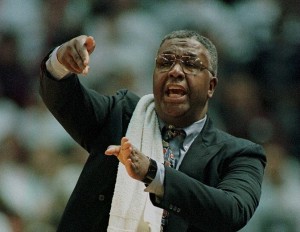 In the years after the 1984 NCAA Championship, Thompson would have three other teams either reach the title game (1985) or the Elite 8 (1987,1989) but the other teams went no further. The biggest stars of those teams in those years would range from Michael Jackson, Reggie Williams, Alonzo Mourning to Dikembe Mutombo. Team that were exceptionally talented but did not always play to the expectations that preceded them. Every program goes through it’s years of expectations being lofted, whether they were met or not, and with this fact, each season provided an opportunity for Georgetown to be not only as good as the expectations set for them, but to be better then the expectations set for them.
In the years after the 1984 NCAA Championship, Thompson would have three other teams either reach the title game (1985) or the Elite 8 (1987,1989) but the other teams went no further. The biggest stars of those teams in those years would range from Michael Jackson, Reggie Williams, Alonzo Mourning to Dikembe Mutombo. Team that were exceptionally talented but did not always play to the expectations that preceded them. Every program goes through it’s years of expectations being lofted, whether they were met or not, and with this fact, each season provided an opportunity for Georgetown to be not only as good as the expectations set for them, but to be better then the expectations set for them.
In the fall of 1992 a pillar of the 1995-96 Hoyas team would arrive on the Georgetown campus as the #1 ranked player coming out of high school.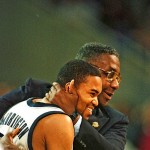 Othella Harrington, an exceptional post player from Jackson,Mississippi (Murrah High School) and the next big man in the line of paint controlling players which had come to Georgetown University. A staple of the teams from the 1992-1993 season through his Senior Season in 1995-96, Harrington was not only a consistent option and presence in the paint for the Hoyas, but he also provided extended voice and reasoning of coach Thompson, was evident during the games not only on the sidelines, but also during game play and in on court huddles. Captain was an undeniable role for Othella Harrington on this 1996 team as his experience and leadership enabled him to provide insight and balance for this otherwise young team. The other captain of this ’96 Hoyas team was forward Jerome Williams (later to become the Junk Yard Dog or J.Y.D.) known for not only his high energy and enthusiasm, but also for his high socks which made him stand out even more on the top of the full court press.
Othella Harrington, an exceptional post player from Jackson,Mississippi (Murrah High School) and the next big man in the line of paint controlling players which had come to Georgetown University. A staple of the teams from the 1992-1993 season through his Senior Season in 1995-96, Harrington was not only a consistent option and presence in the paint for the Hoyas, but he also provided extended voice and reasoning of coach Thompson, was evident during the games not only on the sidelines, but also during game play and in on court huddles. Captain was an undeniable role for Othella Harrington on this 1996 team as his experience and leadership enabled him to provide insight and balance for this otherwise young team. The other captain of this ’96 Hoyas team was forward Jerome Williams (later to become the Junk Yard Dog or J.Y.D.) known for not only his high energy and enthusiasm, but also for his high socks which made him stand out even more on the top of the full court press.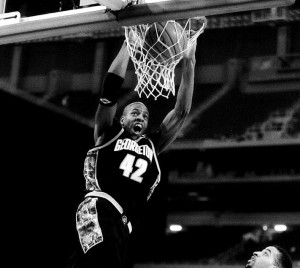 Williams could always be counted on for changing the pace of the game when Coach Thompson decided it was time to turn up the pressure. Although Jerome wasn’t a first option, he still provided scoring that was timely and essential to the Hoyas attack on the offensive end. Whether it was countless deflections, guarding multiple positions of the opposing team or simply providing a timely smile and reassurance to his Hoya teammates, Williams provided the equilibrium needed to keep the Hoyas pushing forward.
Williams could always be counted on for changing the pace of the game when Coach Thompson decided it was time to turn up the pressure. Although Jerome wasn’t a first option, he still provided scoring that was timely and essential to the Hoyas attack on the offensive end. Whether it was countless deflections, guarding multiple positions of the opposing team or simply providing a timely smile and reassurance to his Hoya teammates, Williams provided the equilibrium needed to keep the Hoyas pushing forward.
Allen Iverson. All World. All American. The Answer. The engine which made the team go to new heights. Allen Iverson’s arrival at Georgetown University in the fall of 1994 signaled the “changing of the guard” as his style of play aided in the the restructuring of the style of play which Georgetown had traditionally played; as an inside to outside team, to a team that utilized it’s exceptional guard play to be the catalyst for its success. A great coach adjusts to his talent and this is what Coach Thompson did with the arrival of Allen Iverson. Iverson, an electric guard with an amazing ability to not only score the ball, but to create his own shot was also a dynamic defensive player as well, as he won the defensive player of the year in the Big East his freshman year. A remarkable feat for somebody that was a relatively small guard in a conference traditionally dominated by big men and big guards.
Allen Iverson’s arrival at Georgetown University in the fall of 1994 signaled the “changing of the guard” as his style of play aided in the the restructuring of the style of play which Georgetown had traditionally played; as an inside to outside team, to a team that utilized it’s exceptional guard play to be the catalyst for its success. A great coach adjusts to his talent and this is what Coach Thompson did with the arrival of Allen Iverson. Iverson, an electric guard with an amazing ability to not only score the ball, but to create his own shot was also a dynamic defensive player as well, as he won the defensive player of the year in the Big East his freshman year. A remarkable feat for somebody that was a relatively small guard in a conference traditionally dominated by big men and big guards.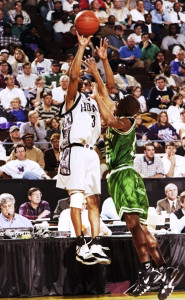 Iverson’s freshman year averages of 20 points per game, 4.5 assists per game and 3 steals per game were only a prelude to the historic things he would do in his sophomore year, 1995-1996.
Iverson’s freshman year averages of 20 points per game, 4.5 assists per game and 3 steals per game were only a prelude to the historic things he would do in his sophomore year, 1995-1996.
Victor Page. If you simply saw Victor Page playing and were not told that he was a Freshman by classification, you would not think he was a freshman by his on court play. A product from Southeast D.C., Page played his high school ball at McKinley Technology High School, leading his team to the DC Championship and earning many individual honors and accolades, among them Washington Post All Metro Basketball Player of the Year.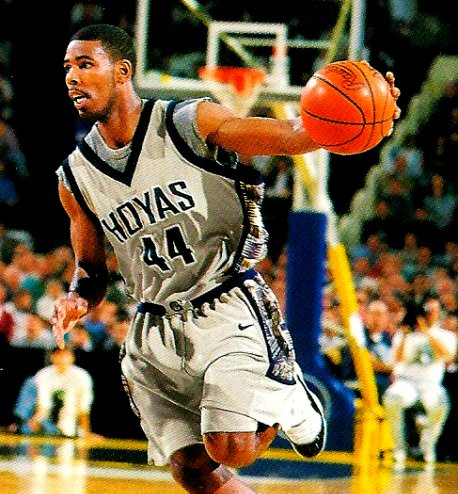 Teaming in the Hoya backcourt with Allen Iverson, Page provided another unstoppable dose of offensive power. A smooth left handed stroke, leap frog like jumping ability and tenacity on the defensive end made Page and Iverson and nightmare for opposing backcourts on both the offensive and defensive sides of the court. Also note, Victor Page went on to win the Most Valuable Player of the Big East Conference Tournament in 1996, as a freshman.
Teaming in the Hoya backcourt with Allen Iverson, Page provided another unstoppable dose of offensive power. A smooth left handed stroke, leap frog like jumping ability and tenacity on the defensive end made Page and Iverson and nightmare for opposing backcourts on both the offensive and defensive sides of the court. Also note, Victor Page went on to win the Most Valuable Player of the Big East Conference Tournament in 1996, as a freshman.
The other parts of the team which enabled the greatness of this Hoyas team to happen may not have necessarily been celebrated in the press as much as their more notable teammates, but nonetheless they were as important. Sophomore big man Jahidi White provided the Hoyas with an interior presence that kept other teams honest and as the team progressed in the 1996 NCAA Tournament,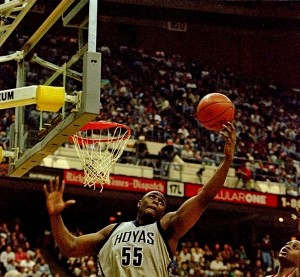 Jahidi’s role on the team began to increase on the offensive end as well as he provided another option for the team to use in addition to Iverson’s offensive prowess. Cheikh “Ya-Ya” Dia, Boubacar Aw and Joseph Touomou provided a stabilizing effect for the team whether as occassional starters or pivotal subs, maintaining momentum and dominance established by the starters or providing an inspirational boost with their hustle and game swinging made shots. Touomou always a guy that provided an extra spark defensively off of the bench when Iverson needed a breather and easily disrupted opposing teams offense with his defensive pressure on the ball.
Jahidi’s role on the team began to increase on the offensive end as well as he provided another option for the team to use in addition to Iverson’s offensive prowess. Cheikh “Ya-Ya” Dia, Boubacar Aw and Joseph Touomou provided a stabilizing effect for the team whether as occassional starters or pivotal subs, maintaining momentum and dominance established by the starters or providing an inspirational boost with their hustle and game swinging made shots. Touomou always a guy that provided an extra spark defensively off of the bench when Iverson needed a breather and easily disrupted opposing teams offense with his defensive pressure on the ball. 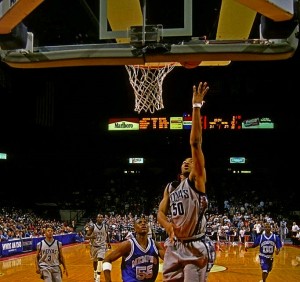 All of these players were molded together by Coach Thompson and played on one string to be a total anchor in a season where they competed against many of the top teams in the country night in and night out. Victories over Villanova, UCONN, University Of Memphis, Syracuse and Georgia Tech, teams which were compromised of All American and future NBA lottery picks solidified the great cohesion of the players playing for Coach Thompson.
All of these players were molded together by Coach Thompson and played on one string to be a total anchor in a season where they competed against many of the top teams in the country night in and night out. Victories over Villanova, UCONN, University Of Memphis, Syracuse and Georgia Tech, teams which were compromised of All American and future NBA lottery picks solidified the great cohesion of the players playing for Coach Thompson.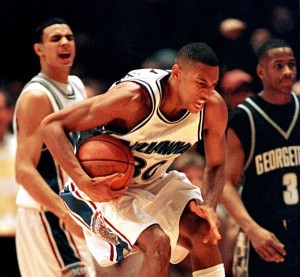
One of the most notable things about this team had nothing to do with their on court efforts; it had everything to do with how they looked playing the game. Stepping on the court at the beginning of the season in the Nike Air Way Up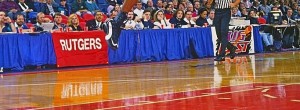 (a shoe that was worn by Scottie Pippen during that 95-96 NBA Season) and then making the smooth transition into the Air Jordan XI, then called the “Patent Leather” Jordans by many at the time these shoes transcended not only the game because of the players they were associated with, but also because of how they were worn. They were a few games in which the players, notably Jerome Williams, Victor Page and Allen Iverson did wear the Nike Air Zoom Flight (shoe of Jason Kidd)
(a shoe that was worn by Scottie Pippen during that 95-96 NBA Season) and then making the smooth transition into the Air Jordan XI, then called the “Patent Leather” Jordans by many at the time these shoes transcended not only the game because of the players they were associated with, but also because of how they were worn. They were a few games in which the players, notably Jerome Williams, Victor Page and Allen Iverson did wear the Nike Air Zoom Flight (shoe of Jason Kidd)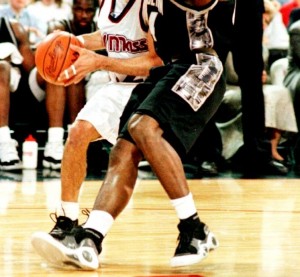 but the one common staple of the season was the Air Jordan XI. Making the shoe even fresher was how Allen Iverson wore the shoe with the all black McDavid Ankle Braces with no shocks showing, taking the black socks trend set by the Fab Five from Michigan to the next level with black ankle braces becoming fashionable for the high school and middle school kids playing basketball at the time.
but the one common staple of the season was the Air Jordan XI. Making the shoe even fresher was how Allen Iverson wore the shoe with the all black McDavid Ankle Braces with no shocks showing, taking the black socks trend set by the Fab Five from Michigan to the next level with black ankle braces becoming fashionable for the high school and middle school kids playing basketball at the time.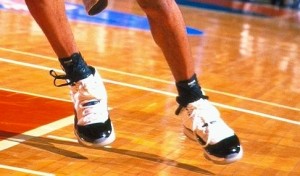 Add the kente style uniforms which the team had started wearing in the prior season, the fashionable style of this team was matched by their on court prowess.
Add the kente style uniforms which the team had started wearing in the prior season, the fashionable style of this team was matched by their on court prowess.
The season was marked with key games, both victories and losses over other great teams in college basketball that year. Playing nine top 25 ranked teams, with many players that would later be drafted in arguably the greatest NBA Draft Class Ever (1996) the Hoyas were more than battle tested and proven against any and all. Madison Square Garden seemed to fuel the Hoyas to play not only their best basketball but also was home to some of there toughest, unforeseen losses; whether it was the 81-91 loss to Arizona in the Pre-Season N.I.T. Championship game which saw Iverson score 40 points in the finale or the heart breaking loss to Ray Allen and UCONN in the Big East Championship on a last second, twisted heave from Allen, all of these moments made for some of the memorable instances from this season 20 years ago.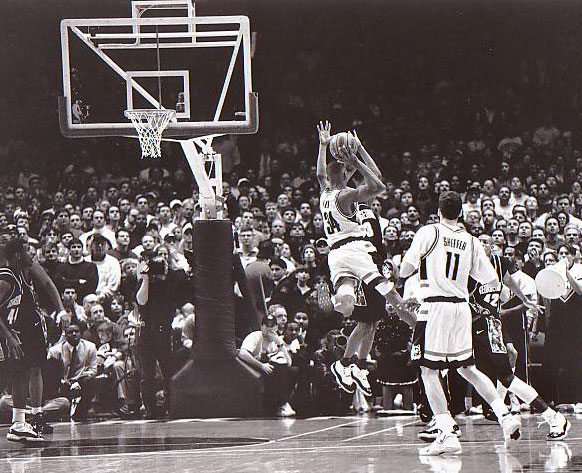
The Hoyas finished the season undefeated at home, going 16-0 and despite the loss in the conference championship game, the Hoyas were heavy favorites going into the 1996 NCAA Tournament to make in to the final four. Crusing past Mississippi Valley State University (a.k.a. Jerry Rice University) in the opening round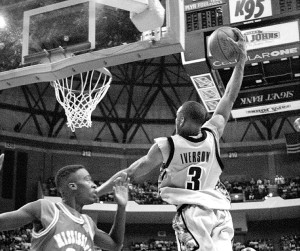 , the Hoyas defeated New Mexico and Texas Techin route to an Elite 8 Matchup with #1 Ranked UMASS coached by John Calipari and led by College Basketball Player Of The Year, Marcus Camby. A battle from the start, the Hoyas, never shy in effort could never get on a roll to carry Coach Thompson to another Final Four as their season ended that day in Atlanta at The Georgia Dome. One game short of the Final Four, the Hoyas left an indelible mark on the program, but also on college basketball and on the generation of player which came along during that time and after.
, the Hoyas defeated New Mexico and Texas Techin route to an Elite 8 Matchup with #1 Ranked UMASS coached by John Calipari and led by College Basketball Player Of The Year, Marcus Camby. A battle from the start, the Hoyas, never shy in effort could never get on a roll to carry Coach Thompson to another Final Four as their season ended that day in Atlanta at The Georgia Dome. One game short of the Final Four, the Hoyas left an indelible mark on the program, but also on college basketball and on the generation of player which came along during that time and after.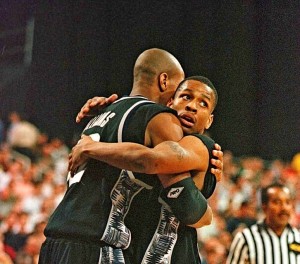 Many times greatness is not only measure in wins and losses but also in impact and this Hoyas team from 20 years ago left a legacy that is still standing strong in the world of basketball today.
Many times greatness is not only measure in wins and losses but also in impact and this Hoyas team from 20 years ago left a legacy that is still standing strong in the world of basketball today.

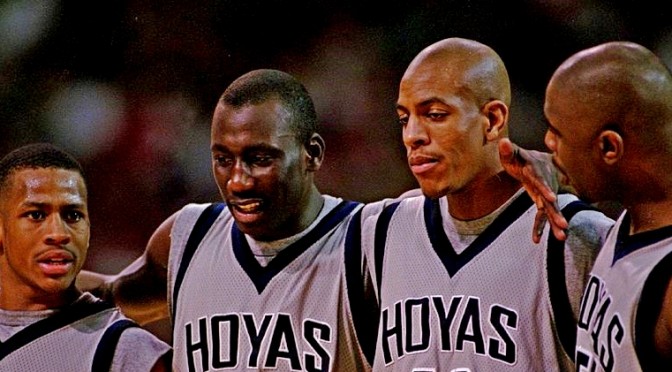
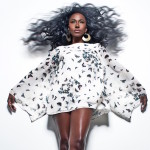
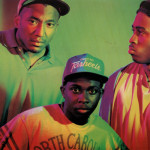
Beautiful:) yes indeed